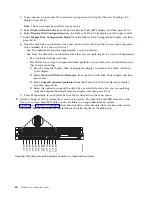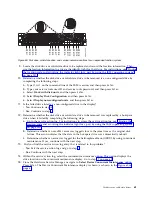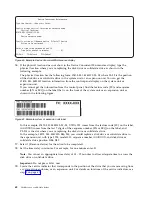
Removing and replacing a disk drive or solid-state drive in the
8284-21A or 8284-22A system with the power turned on in AIX
Learn how to remove and replace a disk drive or solid-state drive (SSD) in a system with the AIX
operating system or AIX logical partition that controls the drive location powered on.
To remove and replace a disk drive or solid-state drive in a system, complete the following steps:
1.
2.
3.
4.
Note:
Removing or replacing this feature is a customer task. You can complete this task yourself, or
contact a service provider to complete the task for you. You might be charged a fee by the service
provider for this service.
Preparing the 8284-21A or 8284-22A system to remove and replace a disk drive or
solid-state drive with the power turned on in AIX
Learn about the steps you must complete before you remove and replace a disk drive or solid-state drive
(SSD) in a system with the AIX operating system or AIX logical partition that controls the drive location
powered on.
If the drive that you are removing is in the root volume group (rootvg) and it is not protected by either
Redundant Array of Independent Disks (RAID) or mirroring, or to use the powered-off procedure, go to
“Removing a disk drive or solid-state drive from the 5148-21L, 5148-22L, 8247-21L, 8247-22L, 8284-21A, or
8284-22A system with the power turned off” on page 42.
To prepare the system to remove and replace a disk drive or solid-state drive, complete the following
steps:
1.
Before you remove a drive from a system that is controlled by the AIX operating system, ensure that
all data on that drive or the array that contains the drive is backed up and removed from the drive.
v
If the drive that is being replaced is protected by Raid-5, Raid-6, or Raid-10 and the array will
remain functional with the drive removed, it is not necessary to back up or remove data.
v
If the drive you are removing is mirrored, you will need to break the mirror before you remove the
drive. Contact your system administrator for assistance.
v
If the drives are just a bunch of disks (JBOD) or a Raid array that will not remain functional when
the drive is removed (that is, Raid-0), ensure that the disks are in the defined state by completing
the following steps:
a.
Remove data access methods from the JBOD or failing array (that is, file systems, databases, and
so on).
b.
Delete the array.
c.
Unconfigure the JBOD.
2.
If you are removing a solid-state device that is on a PCIe RAID and SSD SAS adapter, go to Replacing
an SSD module on the PCIe RAID and SSD SAS adapter and complete that procedure.
3.
Identify the part and the system that you want to service. The disk drive and SSD slots are in the
front of a system. More SSD slots are also available in an expanded function system.
Figure 48 on page 50 and Figure 49 on page 50 show the disk drive and solid-state drive locations and
service indicators. Service indicators are located above the latch handle on the disk drives.
Disk drives or solid-state drives
49
Summary of Contents for Power System 5148-21L
Page 2: ......
Page 18: ...xvi Disk drives or solid state drives ...
Page 202: ...184 Disk drives or solid state drives ...
Page 203: ......
Page 204: ...IBM ...















































